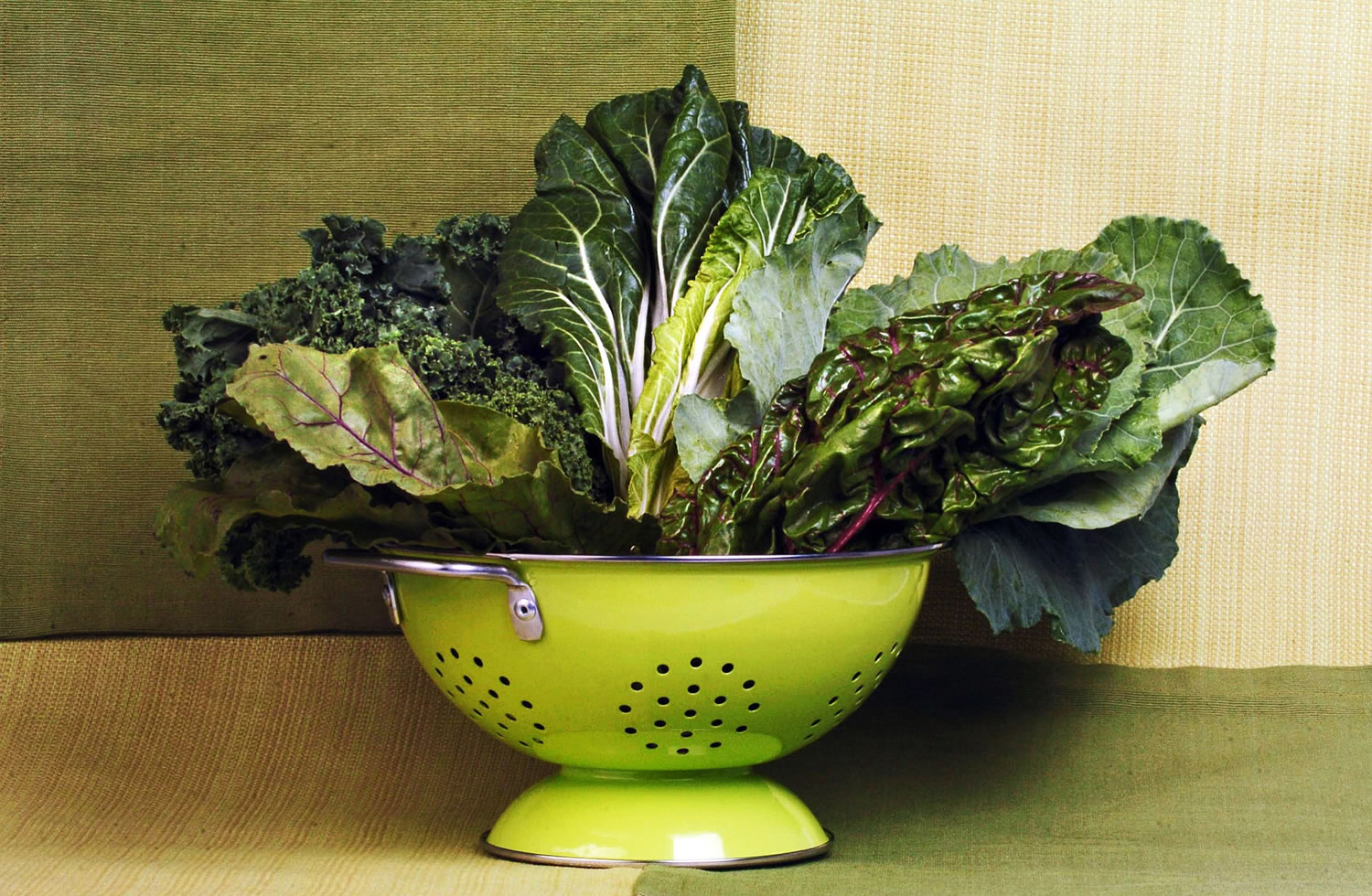You know they are good for you. You know you should eat them often. Dark, leafy greens are nutritional powerhouses, rich in vitamins, minerals, phytonutrients and fiber. The USDA recommends eating a half-cup per day Even so, most of us do not eat as many servings as we should.
Greens are a great way to eat local and in season, as they are one of the first crops to appear in farmers markets, and varieties are available through the entire growing season.
There are many varieties of leafy greens, including favorites such as lettuce, cabbage, spinach and kale. Less familiar in this area are turnip greens, collards, mustard greens, beet greens, Swiss chard, dandelion, red clover, watercress, chickweed, arugula, radicchio, bok choy and broccoli rabe.
When purchasing leafy greens, look for leaves that are fresh, tender and crisp. Do not wash greens before storing, as moisture encourages spoilage. Wrap tightly in plastic and store in the refrigerator for 3-4 days. They are most nutritious when eaten raw in a salad, quickly sautéed in olive oil or lightly steamed.



